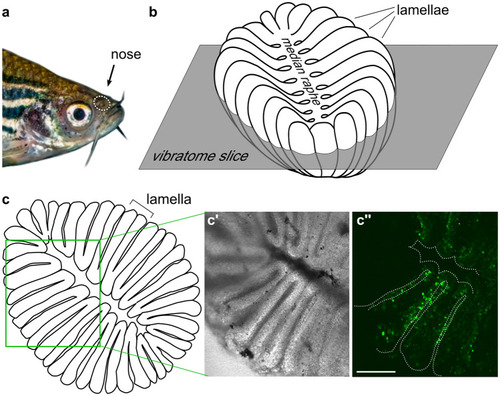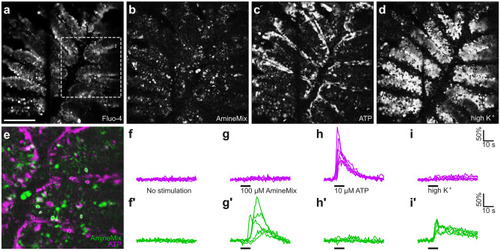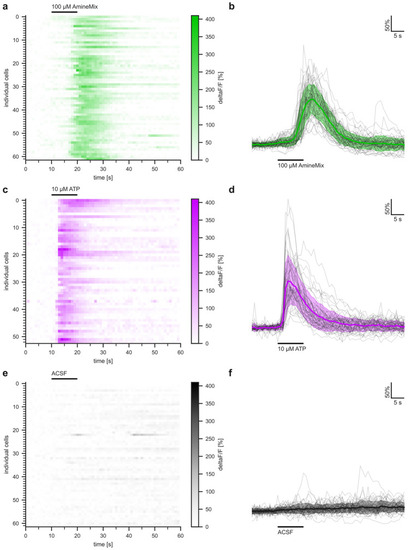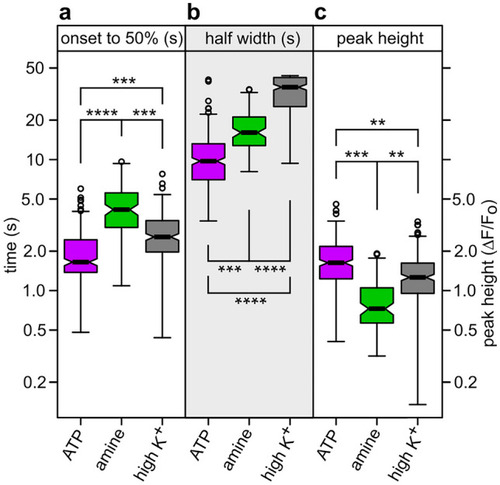- Title
-
Calcium imaging of adult olfactory epithelium reveals amines as important odor class in fish
- Authors
- Dieris, M., Kowatschew, D., Hassenklöver, T., Manzini, I., Korsching, S.I.
- Source
- Full text @ Cell Tissue Res.
|
Slice preparation of adult zebrafish olfactory epithelium for calcium imaging. The position of the nose is shown by the white dotted oval ( |
|
Odor-induced activity for two stimuli classes, amines, and nucleotides. Fluo4-loaded olfactory epithelium slice ( |
|
Calcium response kinetics for amines differ from those for ATP. Panels ( |
|
Statistical analysis shows amine responses significantly different from ATP responses. Calcium responses were measured for cells responding to the amine-mix (103 cells) and to ATP (269 cells). No overlap in cell populations was seen. Additionally, responses to high K+ (225 cells) were measured at the end of an experiment. Three kinetic parameters were quantified: Onset time, measured from onset of response to 50% of maximal peak height ( |
|
Spatial distribution of amine-responding cells equals that of OMP-positive cells. Representative half-lamella segments of olfactory epithelium ( |





